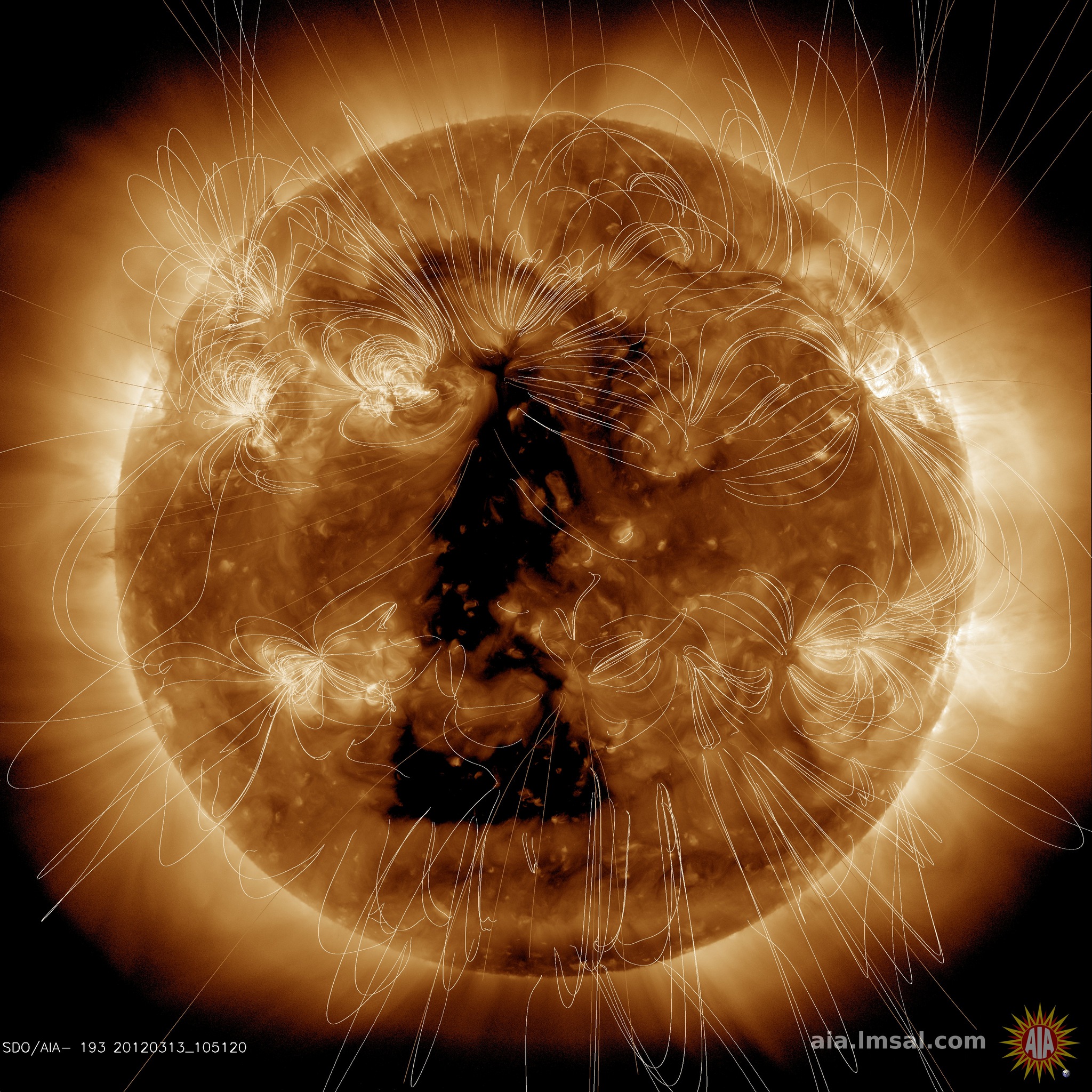The Solar Dynamics Observatory has been witnessing the last days of the slow movement of a large coronal hole above the surface of the Sun. That hole is opening its huge presence of a gap in the structure of the magnetic field of the crown, allowing the escape of a rapid and dense flow of charged particles into interplanetary space. At this time, the coronal hole is directed towards the Earth, so that an expected increase in activity over the next days due to geomagnetic interaction with the terrestrial magnetic field, will be intense because solar wind.
 |
| Coronal hole observed yesterday by Solar Dynamics Observatory in the ultraviolet extreme region (193 Å). It's also represented the magnetic field lines in the coronal solar (representation obtained from the calculus in the base model PFSS). Credit: SDO(NASA)/AIA consortium/Helioviewer. |
The plasma density inside the coronal holes is typically 100 times lower than other regions of the crown. Typically, the gas crown is superheated to temperatures exceeding one million °C, that makes them particularly bright on the images taken in the extreme ultraviolet band. Because of their low density, coronal holes are relatively cool and therefore darker in the area of the electromagnetic spectrum.
During periods of low solar activity, coronal holes tend to be confined to the polar regions of the Sun to occur at lower latitudes will become more common as the solar cycle approaches its peak, so its presence these regions of the solar disk at this stage of the current cycle is a perfectly normal phenomenon.
During periods of low solar activity, coronal holes tend to be confined to the polar regions of the Sun to occur at lower latitudes will become more common as the solar cycle approaches its peak, so its presence these regions of the solar disk at this stage of the current cycle is a perfectly normal phenomenon.
translated from astropt.org
 |
| Angry Sun Erupting Image Credit & Copyright: Alan Friedman (Averted Imagination) |
Explanation: It's one of the baddest sunspot regions in years. Active Region 1429 may not only look, to some, like an angry bird -- it has thrown off some of the most powerful flares and coronal mass ejections of the current solar cycle. The extended plumes from these explosions have even rained particles on the Earth's magnetosphere that have resulted in colorful auroras. Pictured above, AR 1429 was captured in great detail in the Sun's chromosphere three days ago by isolating a color of light emitted primarily by hydrogen. The resulting image is shown in inverted false color with dark regions being the brightest and hottest. Giant magnetically-channeled tubes of hot gas, some longer than the Earth, are known as spicules and can be seen carpeting the chromosphere. The light tendril just above AR 1429 is a cool filament hovering just over the active sunspot region. As solar maximum nears in the next few years, the increasingly wound and twisted magnetic field of the Sun may create even more furious active regions that chirp even more energetic puffs of solar plasma into our Solar System.
in APOD


No comments:
Post a Comment